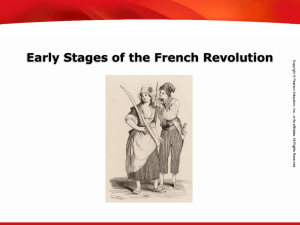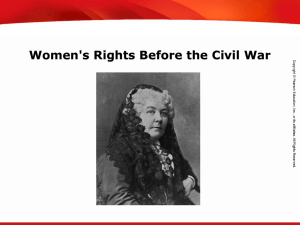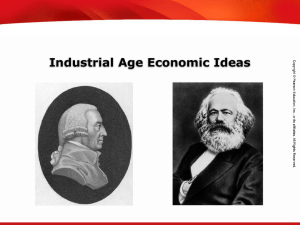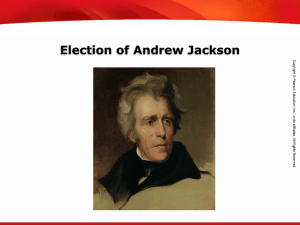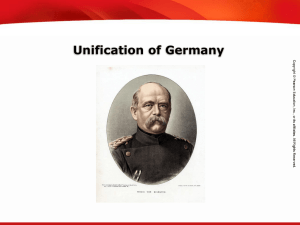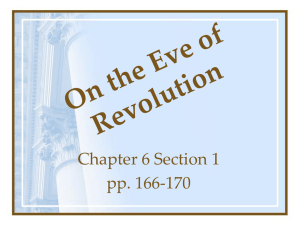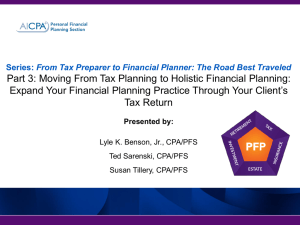slides
advertisement
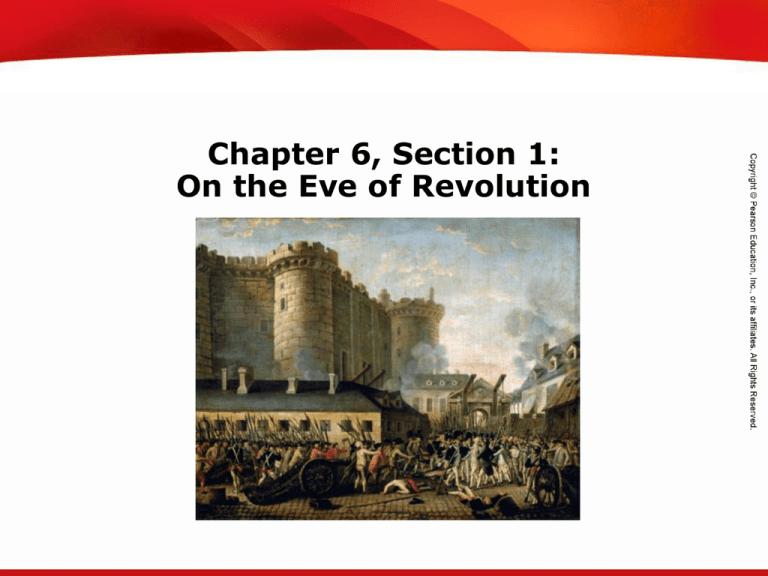
TEKS 8C: Calculate percent composition and empirical and molecular formulas. Chapter 6, Section 1: On the Eve of Revolution TEKS 8C: Calculate percent composition and empirical and molecular formulas. Objectives • Describe the social divisions of France’s old order. • List reasons for France’s economic troubles in 1789. • Explain why Louis XVI called the Estates-General and summarize what resulted. • Understand why Parisians stormed the Bastille. TEKS 8C: Calculate percent composition and empirical and molecular formulas. Terms and People • ancien régime – the government in pre-revolution France • estate – social class • bourgeoisie – the middle class • deficit spending – when a government spends more money than it takes in TEKS 8C: Calculate percent composition and empirical and molecular formulas. Terms and People (continued) • Louis XVI – king of France from 1774 to 1792; executed in 1793 • Jacques Necker – a financial advisor to Louis XVI • Estates-General – the legislative body consisting of representatives of the three estates • cahier – notebook used during the French Revolution to record grievances TEKS 8C: Calculate percent composition and empirical and molecular formulas. Terms and People (continued) • Tennis Court Oath – an oath taken by the members of the National Assembly to meet wherever the circumstances might require until they had created a constitution • Bastille – fortress in Paris used as a prison; French Revolution began when Parisians stormed it in 1789 TEKS 8C: Calculate percent composition and empirical and molecular formulas. What led to the storming of the Bastille, and therefore, to the start of the French Revolution? A volatile atmosphere in France resulted from a widespread famine and the influence of reformers inspired by Enlightenment ideas. The situation exploded on July 14, 1789. TEKS 8C: Calculate percent composition and empirical and molecular formulas. TEKS 8C: Calculate percent composition and empirical and molecular formulas. http://middletownworldhistory.blogspot.com/p/crash-course-french-revolution.html Questions to accompany “Crash Course: The French Revolution” TEKS 8C: Calculate percent composition and empirical and molecular formulas. TEKS 8C: Calculate percent composition and empirical and molecular formulas. TEKS 8C: Calculate percent composition and empirical and molecular formulas. TEKS 8C: Calculate percent composition and empirical and molecular formulas. TEKS 8C: Calculate percent composition and empirical and molecular formulas. In 1789, France’s society was based on a system created in the Middle Ages. The ancien régime separated everyone in French society into one of three estates: First Estate Second Estate Third Estate Clergy Nobility About 95 percent of the population, including the bourgeoisie, urban workers, and rural peasants TEKS 8C: Calculate percent composition and empirical and molecular formulas. The Three Estates TEKS 8C: Calculate percent composition and empirical and molecular formulas. The first two estates enjoyed most of the wealth and privileges of France. The Church • Owned 10 percent of the land • Collected tithes • Paid no direct taxes to the state The nobility • Had right to top jobs in government, the army, the courts, and the Church • Paid no taxes TEKS 8C: Calculate percent composition and empirical and molecular formulas. At all levels, members of the Third Estate had reason to resent the existing social order. • Even wealthy members of the bourgeoisie did not have access to the best government positions. • Urban workers earned pitiful wages and faced starvation whenever the price of bread rose. • Rural peasants owed fees and services that dated back to feudal times. As Enlightenment ideas spread among the Third Estate, many began to question the ancien régime. TEKS 8C: Calculate percent composition and empirical and molecular formulas. Economic troubles added to the social unrest and heightened tensions. Years of deficit spending had put the government deeply in debt. The money had been spent on: • Louis XIV’s lavish court • the Seven Years’ War • support for Patriots in the American Revolution • rising costs of goods and services Bad harvests in the 1780s made it harder to recoup this money. TEKS 8C: Calculate percent composition and empirical and molecular formulas. To solve the financial crisis, the government had to increase taxes, reduce expenses, or both. The first two estates resisted any attempts to make them pay taxes. Louis XV ran up more debt. Louis XVI was weak but attempted some economic reforms. TEKS 8C: Calculate percent composition and empirical and molecular formulas. Louis XVI appointed Jacques Necker as his financial advisor. Necker made recommendations to reduce the debt: • Reduce extravagant court spending • Reform government • Abolish tariffs on internal trade • Tax the First and Second Estates When Necker proposed taxing the First and Second Estates, the nobles and high clergy forced Louis XVI to dismiss him. TEKS 8C: Calculate percent composition and empirical and molecular formulas. The pressure for reforms mounted, but the powerful classes demanded that the king summon a meeting of the Estates-General. The nobles hoped that the EstatesGeneral could bring the absolute monarch under their control and guarantee their own privileges. • In the meantime, France was on the verge of bankruptcy. • Rising prices led to bread riots. • Nobles continued to fight against taxes. TEKS 8C: Calculate percent composition and empirical and molecular formulas. Before the meeting, Louis had all the estates prepare cahiers listing their grievances. • Fairer taxes! • Freedom of the press! • Regular meetings of the Estates-General! Many delegates from the Third Estate wanted to solve the financial crisis, but insisted on reforms. TEKS 8C: Calculate percent composition and empirical and molecular formulas. The voting system created a stalemate, because each estate traditionally met separately and had one vote. 1 vote 1 vote First Estate Second Estate 1 vote Third Estate The Third Estate moved to create a fairer system in which the three estates met together and votes were counted by heads rather than estates. TEKS 8C: Calculate percent composition and empirical and molecular formulas. In June 1789, after weeks of stalemate, members of the Third Estate declared themselves to be the National Assembly and the true representatives of the people. They were locked out of their meeting hall and moved to a nearby tennis court. The members of the National Assembly took the Tennis Court Oath. They pledged to continue meeting until a constitution was established. TEKS 8C: Calculate percent composition and empirical and molecular formulas. Some reform-minded clergy and nobles joined the Third Estate in the National Assembly. Louis XVI was forced to accept the new body. But when royal troops gathered in Paris, rumors spread that the king planned to dissolve the National Assembly. TEKS 8C: Calculate percent composition and empirical and molecular formulas. On July 14, 1789, events erupted into revolution with the storming of the Bastille. • A crowd gathered outside the prison to demand weapons they thought were stored there. • The commander fired on the crowd, killing many. The mob broke through, freeing prisoners but finding no weapons. • The fall of the Bastille challenged the existence of the ancien régime. TEKS 8C: Calculate percent composition and empirical and molecular formulas. The Third Estate Awakens
